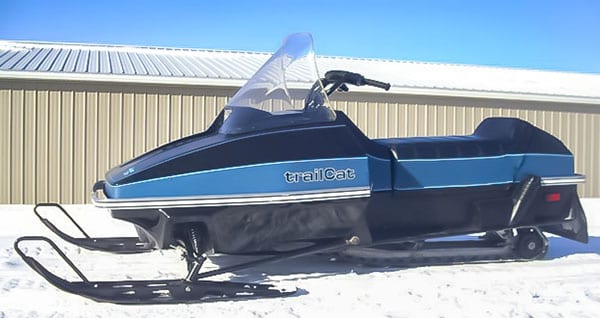
After demonstrations of coil spring ski suspension superiority by Skiroule and Polaris on oval racetracks during the 1976-77 seasons, Arctic Cat won the “race” to market a coil spring trail sled when it introduced the 1979 Trail Cat. “You’ve waited long enough,” was the marketing platform for the new trail sled that would provide a glimpse of the future at a time when the future of snowmobiling was cloudy.
Tomorrow’s Ride Today
At the time, the coil spring ski suspension was widely seen as a performance feature; some consumers had been waiting for it since the 1972 Chaparral oval racers showed how well it could work.
But Arctic Cat created a sled with zero performance credentials, focusing instead on ride quality down the trail. The swing arm front end had a single radius rod to locate the ski spindles, resulting in handling issues when pushed hard. It was essentially the same design that caused unsafe handling in early Chevrolet Corvairs, although other cars used it without controversy.
The Trail Cat’s rear suspension saw Arctic Cat first use external springing on a trail sled to help provide 7 inches of travel – the most in the industry. It also had 8 inches of multi-density seat foam to maximize ride quality.
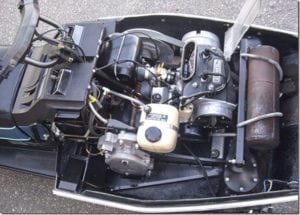
Arctic Cat emphasized that both suspensions drew on technology proven in oval sprint and cross-country racing, inadvertently furthering the idea that this would be a performance machine – which it most definitely was not.
Many snowmbilers felt the 340cc fan-cooled engine was simply not adequate for this big, relatively heavy and pricey machine. However, it was the first oil-injected Arctic Cat sled since the one-shot 1974 Panther VIP. A butterfly carburetor was used because the company felt it pulled easier than the usual slide valve ones. Tube type oil and gas gauges were new for this sled, but instruments were extra cost options – although it did include Arctic Cat’s unique theft-resistant Normally Closed Ignition (NCI) and blue color accents (another first for the brand).
Better, But Not Enough
The 1979 Trail Cat’s ride quality provided a new industry standard, but only if you were able to set the sled up correctly.
The handling was treacherous when the sled was pushed hard, the butterfly carburetor could be trouble and the build quality was relatively poor. Many sleds also suffered from rivets loosening or completely pulling out of the chassis. The front ends loosened so quickly they felt like they had thousands of miles on them when in reality it would only be a few hundred. The door on the plastic rear storage compartment broke off quickly, rendering the large carrying capacity useless. In short, this “revolutionary” new Arctic Cat was a catastrophe.
Better assembly produced a more durable 1980 Trail Cat – with stock track studs and a 440cc engine option for better performance – plus new handlebars and multi-hued trim for improved appearance. The plastic storage box was (unsuccessfully) re-engineered, and the list price increased $1,000, plus an extra $200 for the 440cc engine. About 7,600 Trail Cats were built in 1980, but sales were sluggish due to the model’s already poor reputation, price increase and a weak winter.
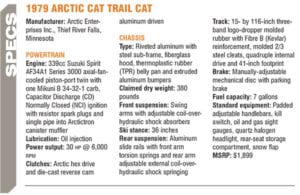
Many unsold 1980 Trail Cats were carried over, and the improved 1981 Trail Cat was produced in smaller numbers – a wise move in hindsight, as industry sales began to slow dramatically.
The 340cc engine was dropped, a speedometer and hand-warmers were added and an El Tigré-type seat and storage compartment replaced the troublesome plastic box. But the price jumped another $900, and sales continued to be softer than the ride quality.
The 1981 model was a far better product than the 1979 or the 1980. It was really a very nice sled if you could overlook the handling issues that continually put riders on the ground. The Trail Cat was eventually dropped from the 1982 line that was never built due to the financial failure of Arctic Enterprises in the spring of 1981.
The swing axle Trail Cat was a pioneering effort that just didn’t work out. Arctic Cat deserves much credit for being the first major manufacturer to market a consumer sled with a coil spring front end and what’s commonly called a “trailing arm” design (though it was truly a leading arm). But the ski suspension design wasn’t right, the first-year quality was awful and the Trail Cat never recovered from a rough start. Today these pioneering sleds are rarely seen.
Editor’s Note: Every issue of Snow Goer magazine includes in-depth sled reports and comparisons, aftermarket gear and accessories reviews, riding destination articles, do-it-yourself repair information, snowmobile technology and more! Subscribe to Snow Goer now to receive issues delivered to your door 6 times per year for a low cost.

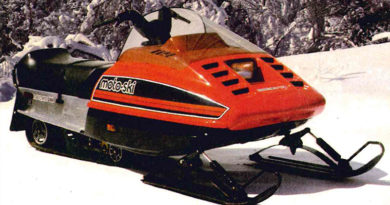
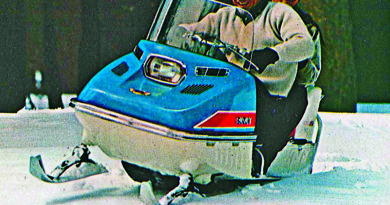
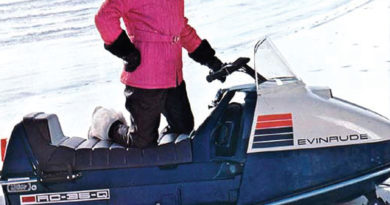
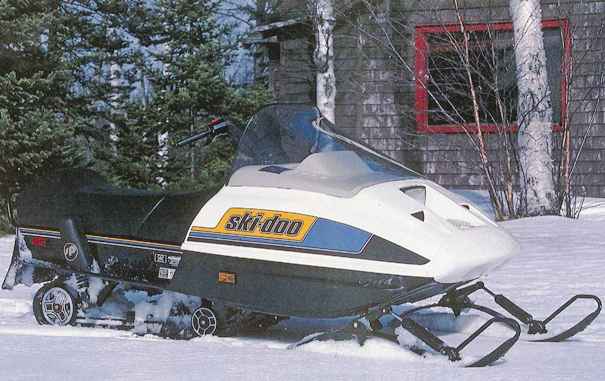


One thing that wasn’t mentioned was the great ride this sled had. At least the ones I rode, I never felt a bump and to an extent, IMO, bump absorption wise, was better than some of todays sleds.
I bet it is similar to my Blizzard 5500mx. I know my Doo is a bit heavy and underpowered but it does have a nice comfy ride. I can imagine the Trail Cat being very similar.
I owned an ’80 Trail cat, but didn’t have the issues mentioned, except the rear trunk lid that broke once and an occasiuonal vapor locking carb. The hyfax wore out faster than normal because there were not any idler wheels in the skid frame, and the rear shocks would fade to zero rebound with heavy abuse. I never experienced front end issues even when I pushed it hard, because anything was better than the leaf springs. Mine came with a 2/3 cleated track that was factory replaced with a rubber track. I put a sway bar on and 3700 miles until the engine died, and then I dumped a 440 el Tigre engine in it with a comet primary and cast secondary clutch, and she performed really well. It was warm and rode better than anything produced at the time.
I still own a 1980 Trail Cat I just actual brought it out to introduce my Niece and Nephew to snowmobiling. Found the fuel line deteriorated so off to the hardware store… I did a FULL to the tunnel restoration on it when I lived in Kodiak, AK. I Rode the piss out of it there then brought it to NY and ride some there. Now it lives in OH. It is a classic….
I remember riding with friends who bought these. The big dissatisfaction was two fold: 1 the front end plowed bad in deep snow. 2. The 340 was so slow that my little 275 twin Jag would blow it off. Now on fire roads with grooming and flat hard trails the sled found its niche and you could ride all day at 30 mph and be much less tired. But I remember endless stops and tinkering trying to use the special tools that came with the sled to dial in the front end, as our friends tried to keep up with Jags and El Tigre’s. . Cat sunk a ton of money in this sled and I don’t think they ever got it back. I think it was prematurely released and if Fox shocks were around back then and they beefed the arms up, hey, it might have been amazing.
I have owned a 1979 Trail Cat since 1989. Did some upgrades; replaced fiberglass belly pan with later plastic pieces, added the temp gauge, replaced cleated track with OEM Cat rubber track kit. Had elec. start and speedo and tach gauges on it when purchased. When purchased in 1989, it was quite beat-up so several body pieces and seat cover were replaced. I find NOS shocks on web from time to time. I own newer cat sleds (1994 x2) as well, but will probably not part with this one until I am too old to ride it. I have never ridden a sled that is this soft on bumps. When you sit on it (185lbs) the sled suspension retracts slightly, like an RC car or automobile. Quite unique ride in the comfort department. I don’t push it hard enough to judge the performance of the handling. I started in snowmobiling in 1969 with our families Yukon King sleds which were made by Silverline Boats out of Morehead MN. Was a magic time for winter when snowmobiles arrived on the scene.